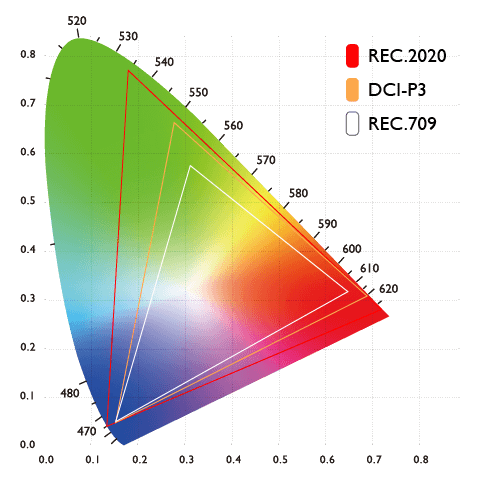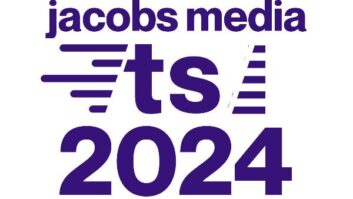Radio World’s “Guest Commentaries” section provides a platform for industry thought leaders and other readers to share their perspective on radio news, technological trends and more. If you’d like to contribute a commentary, or reply to an already published piece, send a submission to [email protected].
I was talking with a “lab-coat level” engineer on video projection systems and realized I’ve been completely unaware of the major differences between audio and video in technology development.

This was about two years ago at an NDA event at Universal Studios up in Orlando, in an actual movie studio — I didn’t know they actually have full filming ability there.)
With current technology, we can exceed human hearing in terms of frequency response. We can emulate direction — surround, phase shifting, multiple speakers — and meet our ears ability (which we must remember is just the receptor, while the brain provides the real “hearing”).
When we consider that our “hearing technology” has one two “mics,” our ears, it’s positively amazing that we can process direction.
But with video technology, we have both color spectrum and frame rate (the equal of fidelity and multiple directions on hearing).
We gauge these with terms like Rec 709 and Rec 2020. To “Cliff Note” the whole thing, our eyes and brain can “see” far more than we can electronically produce!
Laser projectors can now hit almost Rec 2020, but as you look at the accompanying image, what you see is all the color space and what we can currently produce.
The audio equivalent would be the big color image being our “hearing” of about 15 Hz to about 19 kHz (depending on your own age and hearing), and the “triangles” being fidelity would be Rec 709 as like 100 Hz to 9 kHz if this were the audio equivalent. Rec 2020 gets us much closer as a “70 Hz to 15 kHz” comparison. 
In other words, electronically we just really can’t do what we can do with audio … and that is to meet the ability of our eyes.
Now the brain aspect, related to frame rate, gets more interesting.
[Read More Guest Commentaries Here]
Charlie Chaplin and Edison films used very low frame rates (16 fps to 20 fps). This produced a jerky image, since our brains were capable of recognizing it was just a bunch of stills strung together. Yes, we saw motion, but unconvincingly so.
When sound came around, they couldn’t put any fidelity in optical sound tracks unless they gave more surface area (like a reel-to-reel running at 7.5 or 15 ips). So they moved the frame rate to 24 fps and added audio. The image smoothed out and audio was hi-fi. An fps of 24 was “just enough” to convince the brain of fluid motion.
Video came in at 29.97, and today we commonly use 59.94 fps. The speed of the frames creates a far more convincing illusion for the brain.
Now the cool part: I was invited to see a demo of 240 fps shot at Rec 2020 and projected. Holy cow!
It was a war scene from Afghanistan, a special demo movie made with this technology. As I looked at the image, I honestly had to keep reminding myself, “This is not real … it’s just an image.” It was that true. No special glasses. No 3D. Just a frame rate 10 times the speed of film.
I asked the lab engineer, “Are we nearly to the same level with video as we are with audio?” and he said, “Not even close!”
He said there’s a lot of work left to bring the visual reproduction to achieve the maximum ability of the eye (note that we CAN produce light and color that exceed the capability of our eyes; but uncontrolled we can cause severe damage, hence “laser technology”).
I asked about the “brain portion” of all this. “Do scientists know how many frames our brain can decipher before we have maxed the ability?” (Like audio producing waves lower than we can feel, and higher than we can hear.)
He said, “We currently estimate we could go as high as 900 fps, and that would be the limit.” In other words, below that limit, if you threw in ONE single frame of black within 800 frames and rolled it (in one second) in front of a person, they would recognize “something” was there (unless they blinked). At 900 fps, that black frame would be invisible — the brain just couldn’t pick it out from the other 899 frames.
So … totally nerd talk, but I found all this fascinating. I’m just an average person with nerdy interests, but it tells me that the future still has a lot of technology that we can’t even imagine today.
I recently heard a speaker who discussed Moore’s Law and technology. He talked about Elon Musk, Bill Gates and Steve Jobs and said that today, the company or person who will be considered the technology leader in 20 years probably hasn’t even come up with their idea or started their company — the Telsa of 2041 is completely unknown today. I thought that was an interesting statement.
The author is chief video engineer for the Cleveland Orchestra. He has been working in and around radio and TV engineering since age 14.
Comment on this or any story. Email [email protected].












